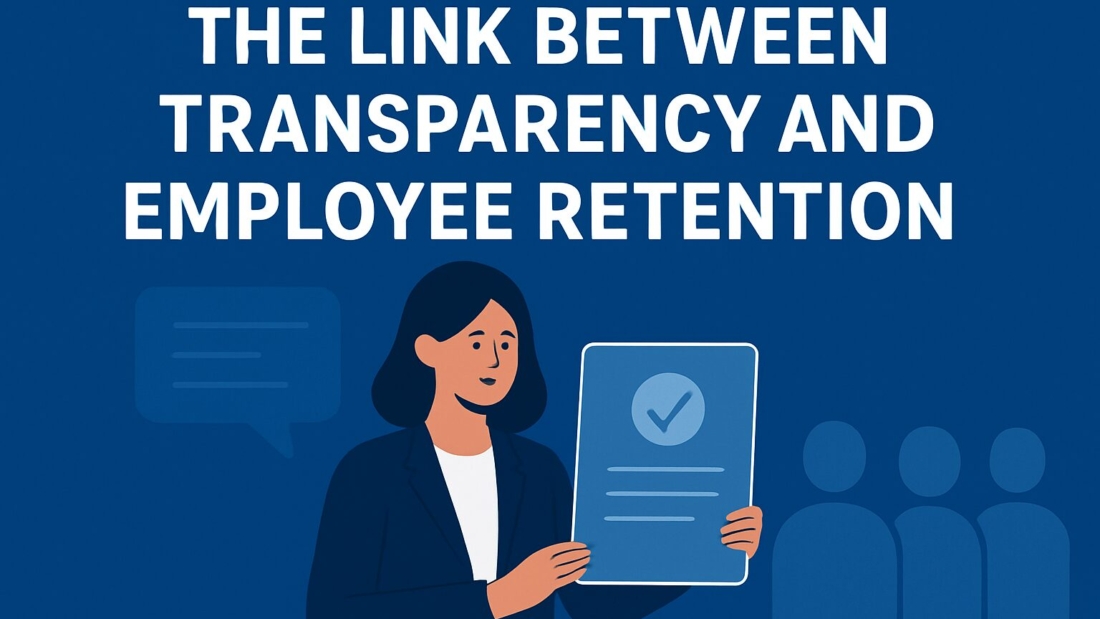In today’s competitive business landscape, employee retention has become a top priority for organizations across industries. High turnover rates not only increase recruitment and training costs but also disrupt productivity, culture, and long-term growth. While many factors contribute to employee loyalty—such as compensation, growth opportunities, and work-life balance—one element stands out as a game-changer: transparency.
Transparency in the workplace is more than just being honest. It is about creating an environment where employees feel informed, valued, and included in the decision-making process. When leaders are open about company goals, challenges, and expectations, it fosters trust that translates into higher retention and deeper employee engagement.
Why Transparency Matters in Employee Retention
- Trust is the Foundation of Loyalty
Employees who trust their leaders are far more likely to stay committed to the organization. Trust is built through consistent transparency—sharing not only successes but also setbacks. When employees see that leadership is authentic and open, they feel respected and are less likely to look elsewhere for opportunities. - Clarity Reduces Uncertainty
A lack of communication breeds rumors, confusion, and insecurity. When employees are left in the dark about company changes or policies, they may assume the worst. Transparent communication eliminates uncertainty and empowers employees with the information they need to feel secure in their roles. - Transparency Encourages Engagement
Employees who understand company strategies and their role in achieving them are more motivated to contribute. This sense of purpose leads to higher engagement, which directly correlates with retention. When workers feel aligned with organizational goals, they’re less inclined to leave. - Openness Builds a Positive Culture
Workplace culture thrives on openness. Transparency creates a culture where feedback is welcomed, mistakes are seen as learning opportunities, and communication flows freely. This type of environment reduces stress, improves collaboration, and enhances overall job satisfaction—all of which help retain top talent.
The Costs of a Lack of Transparency
When transparency is missing, the consequences can be damaging. Employees may feel disconnected, undervalued, or misled. Lack of clarity about promotions, pay structures, or performance expectations can create resentment. Over time, this results in disengagement, decreased productivity, and ultimately higher turnover.
According to research, replacing an employee can cost an organization anywhere from 50% to 200% of that employee’s annual salary. Beyond financial costs, companies also lose institutional knowledge, client relationships, and team cohesion. By prioritizing transparency, businesses can save significant resources while cultivating a loyal workforce.
Practical Ways to Foster Transparency
Transparency should not be a buzzword—it must be embedded into everyday practices. Here are strategies leaders can implement to enhance openness and retention:
1. Share Company Performance
Regularly update employees on the organization’s financial health, goals, and progress. When staff members understand how the business is doing, they feel more connected and invested in its success.
2. Openly Discuss Career Growth
Employees want clarity about their future within the company. Clearly communicating career paths, promotion criteria, and performance expectations ensures that employees don’t feel stuck or overlooked.
3. Encourage Feedback Loops
Create a safe space where employees can voice their concerns, suggestions, and ideas without fear of retaliation. Regular surveys, one-on-one check-ins, and anonymous feedback tools help build a culture of openness.
4. Be Honest About Challenges
Not everything will go smoothly, and that’s okay. Leaders who admit challenges and setbacks, while also sharing how they plan to overcome them, gain credibility and respect from their teams.
5. Lead by Example
Leaders set the tone. If managers demonstrate transparency in their actions and communication, employees are more likely to embrace openness themselves.
Transparency in the Era of Hybrid and Remote Work
With more organizations embracing hybrid and remote work, transparency has become even more critical. Remote employees can feel isolated if communication is inconsistent or unclear. Leaders must over-communicate, provide regular updates, and ensure that remote workers feel equally informed and valued. Digital tools such as Slack, Microsoft Teams, and project management platforms can support this effort by making information accessible to everyone.
The Long-Term Impact of Transparency
Companies that prioritize transparency often see long-lasting benefits beyond retention. These include:
- Stronger Employer Branding: Transparency attracts top talent who are seeking an open, trustworthy workplace.
- Higher Morale and Productivity: Employees who feel included and respected are more motivated to perform at their best.
- Resilience During Change: During mergers, restructuring, or crises, transparent communication helps maintain stability and employee trust.
Conclusion
Employee retention is not just about offering competitive salaries or perks—it’s about building trust through transparency. When leaders share information openly, acknowledge challenges, and engage employees in meaningful ways, they create a workplace culture that fosters loyalty and long-term commitment.
In an age where employees have more choices than ever, transparency is not optional; it’s essential. Organizations that embrace openness will not only retain their talent but also unlock higher engagement, stronger performance, and sustainable success.

